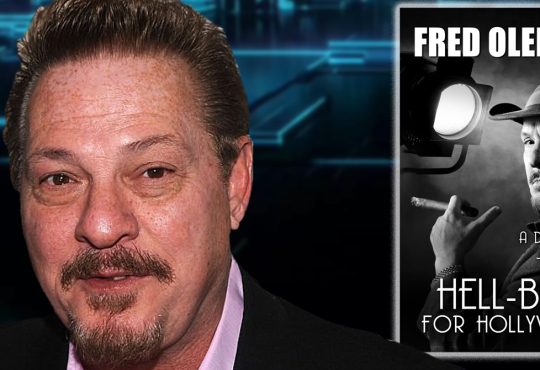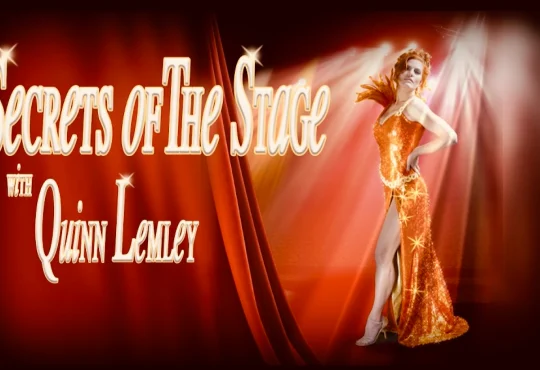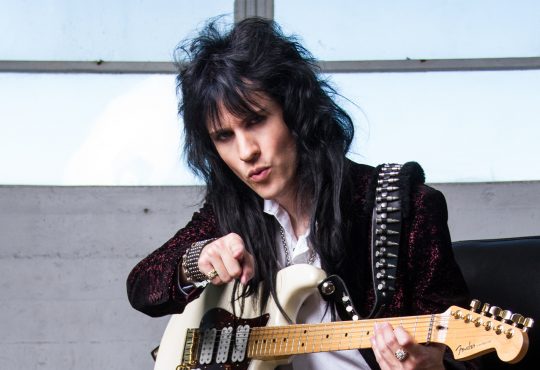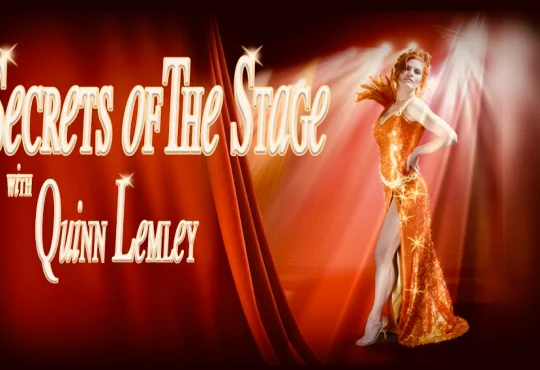‘Friends: The Reunion’: A Meandering Trip Down Memory Lane
Midway through Friends: The Reunion, the six Friends stars are sitting on the recreated set of Monica and Rachel’s apartment, recalling the strange moment in their lives when Friends exploded from successful sitcom into world-dominating pop-culture phenomenon. “No one was going through what we were going through,” observes David Schwimmer. “Our family couldn’t relate. Our friends — our closest friends — couldn’t relate. They were there for us, but the only people who really knew what it was like were the other five.”
Besides unwittingly quoting the show’s theme song, Schwimmer hits on what’s both unique and at times frustrating about this long-awaited reunion. Only these six people truly understand what the Friends experience was like, so why does the special keep bringing in other people to talk about it?
The reunion was meant to be the main event of HBO Max’s launch a year ago tomorrow. Then Covid happened, and suddenly it wasn’t safe for Schwimmer and the others to sit down on the Central Perk couch to reminisce. At the same time, the pandemic turned cast reunions into a quarantine staple. When it was hard to produce new TV, it was easy to get lots of temporarily out-of-work actors to appear together on Zoom, swapping old stories, maybe performing an old script (or, in the case of Parks and Rec, a new one), and raising money for charity. On one level, all those virtual reunions made the hullabaloo over the Friends delay feel a bit silly(*): Was the couch really that important?
(*) That so many of these other stars were doing it just for kicks, or to help worthy causes, also made HBO Max seem like they had really bad timing to pay a reported $2.5 million per Friend right before the world shut down.
On the other, an argument could be made that when it comes to TV reunions, there is Friends and then there is everything else, for two reasons. First, it was not only a gigantic hit back in the days when most people were watching only a handful of networks, but one that has remained a smash in the streaming era. ER (which did a virtual reunion just last month — featuring George Clooney, no less) was at times higher-rated in the Nineties than its Must-See TV companion, but it hasn’t had nearly the same impact on later generations that Friends has through ubiquitous basic-cable reruns, a long stint on Netflix, and now as one of the chief selling points of HBO Max. Second, there is scarcity. Since the last episode aired 17 years ago, the six actors have only been in the same room together one other time, and not publicly. And these are people who have been on the cover of nearly every magazine that’s existed in the last 30 years, with Jennifer Aniston in particular having a long reign as one of the most famous people on the planet. The Seinfeld cast all reprised their roles for an entire season of Curb Your Enthusiasm, where when Friends have gotten back together on camera, it’s tended to be two at most, like when Aniston stopped by Courteney Cox’s Cougar Town.
And as the Friends gather on the old sets where they spent a decade of their lives together, it’s a reminder that the convenience of Zoom reunions costs you luxuries elsewhere. It’s fun, and also eerie, to see them wandering around Central Perk, to watch Matt LeBlanc and Matthew Perry lean back in Joey and Chandler’s matching leather recliners, or to see the others react in person each time Aniston — always with great exuberance — misremembers a detail from years past. Is that worth the wait or HBO Max’s money? Only WarnerMedia’s head accountant can answer the latter, and they’re no doubt busy with details of the company’s merger with Discovery. Entertainment-wise, though, the parts where it’s just these six actors hanging around the familiar stages are among the better examples you’ll find for a reunion, in part because it’s so rare to hear any of them talking about the show these days, much less all of them together.
That said, the simplicity of Zoom get-togethers also means that the focus is entirely on people talking and telling stories, where Friends: The Reunion can never leave well enough alone. And every part of the show that’s not just the six of them talking struggles to justify its existence.
There are seven distinct pieces stitched together for the reunion: 1) the actors talking on the stage together; 2) the actors doing a new version of the trivia contest from one of the most beloved episodes, “The One With the Embryos,” to see who best remembers plot points from the show; 3) the actors periodically doing table reads of famous scenes, with their new performances intercut with clips of the originals; 4) the actors all dressed up and sitting in front of the fountain from the opening credits sequence, being interviewed by James Corden in front of a small crowd of socially-distanced fans; 5) new interviews with Friends creators Marta Kauffman and David Crane, plus executive producer Kevin Bright, explaining the history of both the show and the phenomenon; 6) testimonials from fans, both civilians and fellow celebrities like David Beckham and BTS; and 7) the actors occasionally watching clips and bloopers from the show.
It is, as that paragraph might suggest, a wildly overproduced affair, especially since several of those pieces have their own smaller segments, like a bizarre fashion show of memorable Friends outfits during one of the Corden passages. And most of the material involving people beyond the six cast members seems there to try to explain why Friends is such a big deal, when odds are that anyone who starts streaming it on HBO Max is doing so because they have built-in affection for the show.
Yes, it’s touching to hear people around the world tell stories of personal strife that Ross and Rachel helped them get through. But it’s not necessary, because similar stories can be and have been told about any popular piece of entertainment. Beckham and Kit Harington discussing which Friend they most take after adds nothing, and even the interviews with Kaufman, Crane, and Bright at best skim the surface of Friends history. (They allude, for instance, to the many actors who auditioned for most of the roles, but the only one even directly acknowledged is, of all people, Louis Mandylor, who was the runner-up to LeBlanc and guest-starred in an episode as a man pretending to be Joey’s twin brother. If you’re not going to dish on, say, Cox beating out Nancy McKeon from Facts of Life, why bother at all?) A handful of memorable Friends guests pop up in different segments, most of them adding little value beyond reminding you that you may have enjoyed them when they were on the show. Even when one has a good anecdote — Maggie Wheeler explaining that she invented Janice’s trademark braying laugh as a defense mechanism to keep from breaking character because she found Perry so funny — feels like a distraction from the main event.
Corden’s a mixed bag at best as host of the fountain segments. He often repeats subjects that the actors already discussed on their own, and comes across like an overly enthusiastic Comic-Con panel moderator who would be better off just teeing up the guests and stepping back(*). Occasionally, those segments lead to something delightful, like the joy Perry takes in hearing Schwimmer explain in very serious detail why he hated working with the monkey who played Marcel. More often than not, though, they’re redundant in a special that already has a lot of redundancies built in.
(*) I speak from personal experience, having been that Comic-Con moderator a time or three.
The energy’s just different when the actors are alone together. Like Schwimmer noted, nobody else can fully appreciate what they went through, and that’s palpable throughout the special. There’s an ease and a candor among them that largely goes away when they’re over by the fountain. Perry in particular comes across as fairly raw and worn when he’s just with his old pals — alluding frequently to how desperately he needed the laughter of the studio audience — and is performing for the crowd and Corden. There’s one conversation involving Schwimmer and Aniston that happens in both the public and more private settings of the special, and the private one is far more illuminating in what’s said, and how. (No spoilers here.)
Though the archival clips are for the most part unnecessary in the age of YouTube(*), they work well as accents for the table read segments. It’s not just that the actors are all older (and, in the case of LeBlanc — as he jokes himself — bigger), but that they provide an opportunity to see how easily some of them can slip back into character after so much time (Lisa Kudrow effortlessly flips the Phoebe switch several times), while for others it’s more of an obvious strain.
(*) There are some great bloopers, particularly of Schwimmer, Perry, and Aniston in hysterics after the director calls cut on the famous “PIVOT!” scene. But even that one has appeared in other specials.
Perhaps the version everyone intended to make a year ago would have been simpler, and all the extraneous material and guests were added as a way to differentiate this from the many reunions that happened in between. But having all six Friends under their old roof should be enough in itself. As Kudrow puts it when she first arrives on the old stage and sees Schwimmer, “This is all I care about.” It’s all anyone should care about, even if Friends: The Reunion keeps thinking otherwise.
HBO Max will release Friends: The Reunion on May 27th. Stream it here.







